William F. Buckley Jr. once quipped that he would rather be governed by the first 2,000 names in the Boston phone book than by the Harvard faculty. New York City is about to be governed by the Columbia University student body. A city that used to think of itself as grown up has just elected a mayor who seems the very embodiment of the American college student: uninformed, entitled and self-important, enjoying a regal quality of life that depends parasitically upon a civilization about which he knows nothing, yet for which he has nothing but scorn.
American college students regularly act out little psychodramas of oppression before an appreciative audience of diversity deanlets and associate vice-provosts of inclusion and belonging. Zohran Mamdani, the quintessential product of the academy, is poised to take such performative grievance to one of the biggest stages in the world. The results will not be pretty.
Mamdani’s governing agenda reflects his family background, education and negligible post-college career. Now 34, he was born in 1991 to a professor of postcolonial studies and a filmmaker. The family moved to New York City from Uganda in 1999 so that Mamdani’s father, Mahmood, could teach in Columbia University’s Middle Eastern, South Asian and African Studies Department and direct the university’s Institute of African Studies. The young Mamdani imbibed academic anti-westernism at the family dinner table, which hosted such leading lights of postcolonial studies as Columbia’s Edward Said and Rashid Khalidi.
Mamdani fashions himself a champion of the working class. He chose not to attend New York’s most storied working-class college, the public City College of New York (then $6,330 a year), however, in favor of the private Bowdoin College, a bucolic, secluded retreat in Maine (then $59,900 a year). The centuries-old New England institution grew out of the finest ideals of America’s Founders; it boasts Nathaniel Hawthorne, Henry Wadsworth Longfellow, US president Franklin Pierce, Supreme Court justices, decorated Civil War generals, abolitionists and industrialists among its graduates.
Today, however, a Bowdoin education is awash with victim ideology, as documented by the National Association of Scholars in 2013, the year before Mamdani graduated. As an Africana studies major, Mamdani would have taken courses along the lines of “Race, Land and (Dis)/(Re)possession: Critical Topics in Environmental (In)justice and Subaltern Geography,” which examines how “race, gender, and class operate under racial capitalism and settler colonialism both in ‘the past’ and in ‘the contemporary.’” This is a new offering, but the high theory-based fields have been ossified since Jacques Derrida’s Of Grammatology burst onto the American scene in 1967. The rhetoric of 2025 is identical to that of 2014.
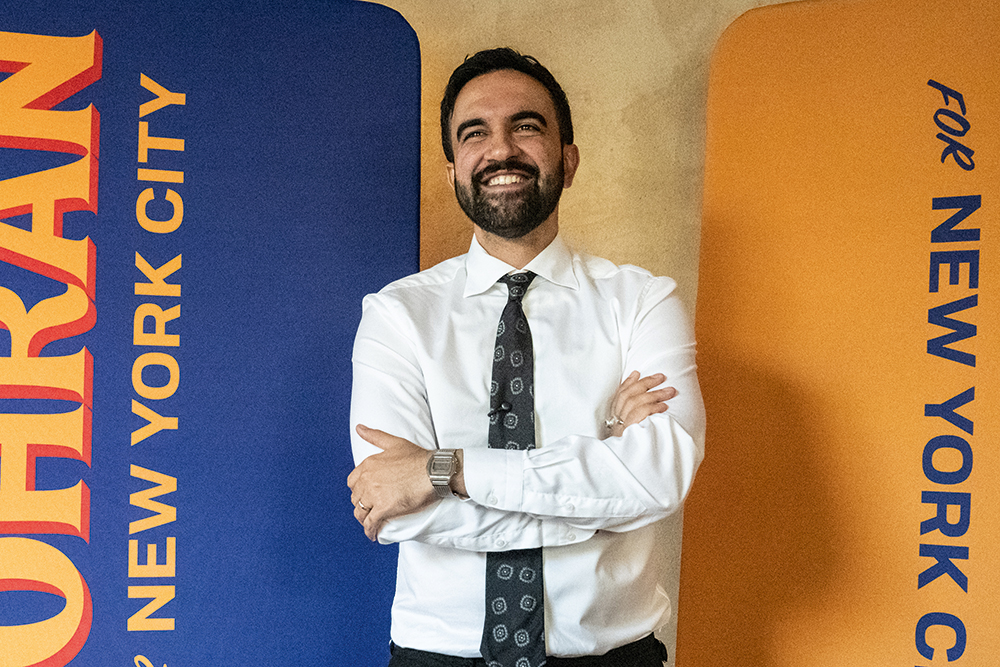
Had Mamdani attended college ten years later, he would probably have led chants of “globalize the intifada” from an anti-Zionist encampment on his campus quad. Instead, he did an arguably even more important thing for the pro-Palestinian cause: he founded Bowdoin’s inaugural chapter of Students for Justice in Palestine (SJP). From his leadership position with SJP, the keffiyeh-wearing undergraduate tried to jumpstart a Bowdoin boycott of Israeli universities. Israeli higher education, he wrote, was “both actively and passively complicit in the crimes of both the Israeli military and the Israeli government in all its settler-colonial forms.” Mamdani had well absorbed his intellectual patrimony.
Of course, no immersion in anti-colonialism would be complete without close study of Frantz Fanon, the Algerian revolutionary who legitimated Third World terrorist violence. Mamdani’s senior thesis focused on Fanon’s relationship to the thought of Jean-Jacques Rousseau.
Thus launched into the real world with an unclouded ignorance of private enterprise and public virtue, Mamdani drifted through his first six years after graduation. Just as the young Barack Obama had struggled in Chicago to find a cause to organize around, Mamdani hopscotched among various left-wing activist groups – MoveON Seattle, TexPIRG and Chhaya, the latter a government-funded social justice organization in New York. His mother briefly employed him as a “music supervisor” on one of her films. A career as a rapper was abortive. He worked on an unsuccessful political campaign or two for New York progressives, then decided he was ready for office himself.
He was elected to the New York State Assembly for Queens in 2020 on the Democratic Socialists of America ticket. As a member of the State Socialists in Office bloc in Albany, he can take credit for a negligible three bills and a lot of missed Assembly votes. Next up: the New York mayoralty. Mamdani’s governing philosophy can be encapsulated in the slogans beloved of undergraduates confronting supposed injustice for the first time in human history: “People before profits!” “Fight corporate greed!” “Housing is a human right!” His campaign focused on four proposals, all inspired by the city’s alleged affordability crisis: he would freeze rents; make city buses free; offer free universal childcare; and open a government-operated grocery store in each of the city’s five boroughs.
These four proposals run the gamut from sweeping to weirdly narrow. But they all treat urban governance primarily as a means of shrinking the role of for-profit enterprise, expanding public control and redistributing wealth from its creators to the so-called poor. They may be quickly disposed of.
Proposal one: decommodify housing! Mamdani’s rent freeze would apply to nearly half of all rental units in the city: those whose rents are set by an appointed “Rent Guidelines Board,” not by the housing market. Those million or so rent-stabilized apartments make up one-third of the city’s homes, including owner-occupied homes.
Even left-wing economists have concluded that rent controls produce only housing shortages. Yet for those with an undergraduate mindset, landlords are greedy for wanting to earn a market rent, whereas tenants enjoying a below-market rent are merely receiving their due.
The four-year freeze would decimate New York’s housing stock. The city’s small landlords are already at death’s door. Maintenance costs have risen by 28 percent over the last five years; the regulated rents fail to cover repairs, property taxes or the costs of deadbeat tenants. Thanks to the city’s advocate industry it takes about two years to evict a nonpaying renter, during which time the landlord has to provide him the same services as paying tenants. Apartment owners shell out their own lawyers’ fees; activist-assisted tenants do not.
There are already 50,000 to 60,000 abandoned rental properties in the city. That number would balloon under a rent hike moratorium, adding to the city’s blight. Ripple effects could spill over to the banking sector. But more abandoned properties merely mean more opportunities to move “toward the full de-commodification of housing,” as Mamdani puts it. Meanwhile, the rent freeze would do nothing to lower the cost of other housing in the city, in which the majority of New Yorkers live.
Proposal two: farebeating for all! Mamdani wants to make city buses free, at the cost of almost three-quarters of a billion dollars a year in canceled fares.
Nearly half of all New York City bus passengers already steal their rides. That is not because they are poor, but because they feel entitled to free stuff. Though the full transit fare – $2.90 a ride, with discounts for those with weekly or monthly passes – is already heavily subsidized, the city offers half-priced transit fares to lower-income residents. But fewer than 40 percent of those eligible have signed up for the half-price fare program.
If the principle of free bus rides is established, farebeating in the subways, already pervasive, will skyrocket. The loss to the city will be more than monetary. The greater loss will be in the further degradation of public order underground.
Proposal three: it takes a village! Mamdani is promising $5 billion worth of free childcare to all New Yorkers, starting from the sixth week after birth. Where this new army of social-service workers will come from is anyone’s guess. Their level of competency, however, is predictable. Run-down nonprofit organizations providing taxpayer-funded foster care, welfare programs, illegal immigration support and the like dominate the streetscapes in less affluent New York neighborhoods. Their employees are often but one baby step ahead of their clients in terms of social functioning.
Proposal four: fight hunger! Or rather: fight food insecurity! Or, well… whatever! Mamdani’s fourth election plank is among his most quixotic: a city-run grocery store in each borough. We are to believe that New Yorkers can’t afford to feed themselves from private grocery chains, due to the evil profit motive of greedy store owners. To test this proposition, exit the Lexington Avenue subway line at 125th St. in Harlem. You will emerge into a sea of fast-food detritus – half-eaten pizza slices, discarded soda cans, paper wrappers from submarine sandwiches, chicken bones with the meat still on them, greasy Styrofoam clamshell containers. The fast-food outlets on 125th St. do a brisk business, even though a large, well-stocked supermarket is just a block away from the subway station, offering sustenance at a fraction of the cost of takeout.
In an October 16 mayoral debate, Mamdani claimed that children in New York were going hungry. In fact, their biggest problem is obesity. If their meals are haphazard, the reason is not the cost of food but the disorganization of their usually single mothers, sometimes strung out on drugs.
The American grocery store is a miracle of capitalist abundance; Mamdani sees it as a scourge. We are to believe that the government can master supply chains without taking price signals into account and can run clean, well-stocked stores that meet consumer demand. Mamdani is apparently unaware of the state of retail under communist and doctrinaire socialist countries or of their people’s struggles to throw off the shackles of government control.
If there is a food problem in New York, it is the relative scarcity of grocery stores in some areas, not the cost of their contents. There would be more options if the city reduced shoplifting. Target opened its first Manhattan branch in East Harlem in 2010 to great fanfare, despite the efforts of Mamdani’s ideological allies to keep such a capitalist Goliath from besmirching the city’s corporate-chain-free purity. The East Harlem outlet boasted an exquisitely multicultural inventory and low-cost fresh food. It shut down in 2023 due to retail theft and crime risk to its employees. For its losses it can thank the Manhattan District Attorney, Alvin Bragg, who has decriminalized shoplifting by not prosecuting it. Mamdani would not even have the police arrest shoplifters in the first place, since shoplifting is not a “serious” crime.
Mamdani’s public grocery stores resemble the pro-Hamas encampments that sprang up across college campuses in the wake of the October 7 terror attacks: both are elaborate charades of revolutionary fervor, fake to the core. The campers play-acted the role of brave dissidents standing up to brutal state power, all the while safely guarded from external threat, watched over in their North Face tents by worried administrators, supplied with pizza and vegan protein bars by sympathetic faculty, no more at risk than a child who has built a cozy fort under a blanket on a rainy day.
The city-run grocery stores will depend on the wonders of capitalist production in all its multifaceted complexity, their wares supplied by communications networks of smartphones and satellites, by trucks and warehouses, by delivery companies and agricultural concerns, all generated by competition and the profit motive. The city commissaries’ thin little crust of pretend socialism will rest upon a solid infrastructure of private enterprise.
So much for Mamdani’s four-part affordability agenda. But the rest of his platform reflects the same adolescent unawareness of reality.
Housing for the many! Mamdani wants to “unleash the public sector to build housing for the many,” to the tune of another 200,000 units. Never mind that New York’s existing portfolio of 177,000 public-housing apartments is so poorly run that the NYC Housing Authority operates under a federal monitor. The monitor has hired private managers to try to overcome the system’s chronic lack of hot water and electricity and crumbling infrastructure. Mamdani the socialist purist would purge the private partners. You can’t say that New Yorkers have not been forewarned about what that portends. On October 1, a 20-story ventilator shaft on the outside of a Bronx public-housing building sheared off from the main structure in an avalanche of bricks and mortar.
It is not just publicly owned buildings that are collapsing. Roads and subway tunnels regularly flood. On July 15, 20 subway stations were closed because of rain. This infrastructure decay did not figure in Mamdani’s campaign.
Defund the police! Dismantle the carceral state! The biggest lacuna in Mamdani’s pitch for the mayoralty concerned the biggest problems blighting New York: public disorder and explosive random assaults. When prompted to address them, he offered solutions right out of the black studies/postcolonial theory playbook. The press has consistently allowed Mamdani to get away with his claim to have abandoned his “defund the police” agenda. He has not. In 2022, two years after stating that the New York Police Department is “racist, anti-queer and a major threat to public safety,” he was calling for the already straitened NYPD to be reduced by another 1,300 officers. “We can’t reform our way out of a racist police system that’s working exactly as designed – as a means of control over black & brown New Yorkers,” he wrote. Mamdani’s current crime platform would reallocate $600 million from the NYPD’s traditional patrol activities to a new $1.1 billion bureaucracy within the NYPD: a new Department of Community Safety. Traditional policing would be defunded in order to bring in a cadre of social workers. But isn’t traditional policing already about “community safety?” Yes, it is. The name change reveals that something else is going on.
The new army of social workers – the same near-unemployables already liberally presumed upon in the rest of Mamdani’s platform – would allegedly prevent crime by addressing what Mamdani deems its root cause: “inequality, exploitation, and disinvestment.” Police officers would be limited to arresting offenders for what Mamdani calls “serious crimes.” Mamdani would put a further pincer around officers’ capacity to arrest by shutting down the city’s aging jail complex before any new lockup facilities can be put into operation.
The ideas animating the proposed Department of Community Safety have been repeatedly discredited. There is no rigorous, replicable evidence that so-called community-based alternatives to policing consistently lower crime. “Violence interrupters” are a key component of such non-police interventions. These former gangbangers are supposed to defuse the “street” tensions that generate retaliatory drive-by shootings; they have a history of getting rearrested for new crimes themselves.
The NYPD already pays 50 nonprofits to use non-policing strategies to reduce gun violence. If that initiative conclusively worked, the data-driven NYPD would have already greatly expanded it.
The Mayor’s distinction between “serious” and “unserious” crime is beloved of cop-haters everywhere. When pressed, an anti-police activist will say that he can accept arrests for “serious” crime – but not, implicitly, for “unserious” crime. This distinction has it exactly backwards. Criminals are polymorphous offenders; instead of specializing, they offend across the board. The best way to prevent “serious” crime is to enforce lower-level offenses. Waiting around for a “serious” offender to commit a “serious” crime ignores routine opportunities to get him off the street. Virtually all of the fiends who have committed heinous offenses in the lead-up to the election have long histories of misdemeanor and public-order crimes which, cumulatively, should have resulted in their long-term incarceration. Mamdani has said that he would “take every step to decarcerate.” In fact, the US does not incarcerate enough. Prison remains a lifetime achievement award for persistence in criminal offending. You have to work very hard to get yourself punished with, and held to, a long-term prison stint. Most criminals are given alternative, nonpenal sentences “in the community” – if they are prosecuted at all.
In 2022, Assemblyman Mamdani backed a bill that made it harder to revoke parole for felons who violate the conditions of their parole. This September, a parole violator was accused of slaughtering an elderly Queens couple, Frank and Maureen Olton. Jamel McGriff, a convicted sex offender, was still out “in the community” at the time of the alleged attack, despite having failed to correctly register with his parole officer. The burly McGriff allegedly knocked on the couple’s door and asked to recharge his cell phone. They had let him in to do so. So much for white racism.
According to sources, McGriff spent the next five hours sexually assaulting and torturing his benefactors before setting their house on fire. He then is alleged to have proceeded to the inevitable shopping spree with the victims’ credit cards. McGriff had 11 prior convictions and was out on parole when he allegedly committed these crimes. Without the Mamdani-backed loosening of New York’s parole laws in 2022, McGriff’s failure to register as a sex offender might have sent him back to prison.
Mamdani wants to shift the authority to discipline and fire police officers from the New York City Police Commissioner to the Civilian Complaint Review Board, a mark of his continuing mistrust of the police. The CCRB investigates civilian complaints against officers and recommends disciplinary measures. The police commissioner can override its findings. Police officers see that override power as a check on a leftward-leaning body that has no understanding of the challenges of urban policing. Giving the CCRB final say over an officer’s career would be a blow to already rock-bottom morale and could accelerate the exodus from the department.
In late October, Mamdani said that he would ask the respected current police commissioner, Jessica Tisch, to stay on board. Given her radically different view of law enforcement – she is for it – her tenure in a Mamdani mayoralty would be stormy and probably short-lived.
As for Mamdani’s claim that “inequality, exploitation and disinvestment” cause crime, New York’s young thugs almost invariably have smartphones and the latest sneakers and parkas. Inequality and disinvestment do not lead young men to indiscriminately spray bullets across sidewalks; such behavior stems from a lack of impulse control and poor socialization. Redistribution will not cure those deficits – they are best combated by responsible parents.
Housing first! One of the activist class’s greatest public relations coups has been to brand untreated mental illness and drug addiction as a housing problem. When, in the 1980s, the “homeless” coinage was new, perhaps a policymaker could be forgiven for buying into it. Since then, however, the reality of “shelter resistance” has been proven on a daily basis, every time a “homeless outreach” team sallies forth with offers of shelter and services, only to be rebuffed by vagrants who would prefer to stay on the streets.
A good part of Mamdani’s Department of Community Safety will be taken up with this futile business of trying to coax drug-addicted, mentally ill vagrants to accept services and housing. According to the Mayor’s plan, social workers alone will respond to 911 calls that have a mental health element; a police officer will come along only if the dispatcher deems violence a possibility. But violence is always a strong possibility when mental illness and chemical addiction are combined. Routine assaults and stabbings by the mentally ill chemical abuser (MICA) population, routine pushing of passengers onto subway tracks, are 100 percent predictable. Every day that politicians look away as MICAs decompose in public is a day that those politicians are complicit in likely predation.
Like much of Mamdani’s platform, his vagrancy proposals simply throw more money at programs that New York has already been operating to little effect. His billion-dollar Department of Community Safety is merely a better-endowed version of an existing multimillion-dollar homeless outreach initiative. Most of its clients never take their prescribed medications or follow up on appointments with their assigned psychiatrist or nurse.
The only thing that will solve the vagrancy crisis in American cities is compulsion. New York is bound by a misguided court decree to provide shelter to anyone who asks for it. The rule should be: if taxpayers are obligated to provide shelter on demand, its intended recipients must use it. They may not appropriate public space and jeopardize the safety of the law-abiding. There is nothing compassionate about allowing these pitiable scarecrows to wander alone and crazed, beneficiaries of an advocate-generated, purely theoretical autonomy that ignores their patent inability to use it.

But Mamdani has no intention of getting vagrants off the streets. He opposes involuntary commitment, conceding only that it should be the “last resort” a city takes. We are already long past that last resort. It must now be the first resort.
So far, Mamdani’s policing and vagrancy ideas are a retread of failed policies. His one new idea serves only to drive home how cut off he is from any connection to reality. The New York subway system contains abandoned retail spaces tucked into stair landings and on platforms. These erstwhile shoe stores, watch-repair stores, electronics outlets and takeout stands were wiped out by the Covid lockdowns and rising crime. Mamdani would turn those empty spaces into homeless drop-in centers. You would no longer face a chance of being accosted by a mentally ill vagrant as you tried to get to work – in many stations, you would be all but guaranteed such an encounter.
Fight the 1 percent! Mamdani estimates that his free buses, free childcare, taxpayer-funded public housing expansion and other goodies will cost an additional $10 billion a year. (That $10 billion – nearly 10 percent of the city’s existing $111 billion budget – is undoubtedly an undercount.) No problem! It’s about time the rich “pay their fair share,” as Mamdani puts it. The mayor has never seen a high tax rate that does not fill him with envy and longing, if it is higher than what New Yorkers pay. So when he observes that neighboring states allegedly have higher corporate tax rates, he does not see a comparative advantage, he sees a missed opportunity. Any money left in the private economy, whether through insufficiently high taxes or inadequate tax collection, is money that is “being wasted,” he says. It could otherwise be “invested in the future of this city,” according to Mamdani – because, you know, private enterprise does not generate urban growth.
The economies of these neighboring states are even more underperforming than New York’s; they face the same exodus of businesses and residents to low-tax red states. But since private enterprise exists only to generate tax revenue, who cares if it leaves? The resourceful socialist can further raise taxes on the businesses that remain. By hiking New York State’s corporate tax rate from 7.25 percent to that of New Jersey – 11.5 percent – New York City would allegedly capture another $5 billion from the private sector (assuming that corporations in Buffalo would accede to paying higher taxes to subsidize free buses in Gotham).
Then there’s the individual taxpayer. One percent of the city’s residents earn more than $1 million a year. That 1 percent – 34,000 households out of the city’s 3.3 million – pay 48 percent of all income taxes in New York City. They are ditching their fair share, Mamdani alleges. He has never indicated what would be their fair share, but as an interim step toward economic justice, he would add a 2 percent surcharge on the wealthy’s current 3.9 percent income tax rate, to yield an expected $4 billion.
Like many of Mamdani’s promises, his vow to make the wealthy pay their fair share is playacting. He cannot raise city and state taxes unilaterally; that can only be done by the state legislature and governor. To date, New York Governor Kathy Hochul has ruled out further tax hikes. Hochul’s slavish endorsement of Mamdani to prove her progressive street cred, however, is a worrisome sign of a possible future rapprochement.
Likewise, Mamdani cannot unilaterally freeze rents or liberate downtrodden bus riders from having to pay for a service. What counts, apparently, is that his intentions are “good” – however the socialist credo defines goodness. And by voting for him, New Yorkers have proven that they, too, are good and that they oppose Republican, and especially Trumpian, greed and injustice.
Running the Leviathan that is New York City government is not an ideological project, it is an enormous management challenge. Mamdani’s assembly staff in 2021 consisted of four women. He will now be overseeing a 300,000-strong public workforce and thousands more private and nonprofit contractors. Putting him at the top of Gotham’s government is like parking someone who cannot read music in front of an orchestra and expecting him to conduct Stravinsky’s Rite of Spring.
It took an urban-governance revolution to wrench New York from decades of squalor. That revolution borrowed management techniques from the private sector: measuring results, holding officials accountable and paying contractors for performance, not effort. Mayor Rudolph Guiliani’s City Hall (1994 to 2001) measured and monitored everything. First deputy mayor Joe Lhota got a briefing book every morning with performance data from the day before: what crimes had happened? How much trash had been collected and what was the condition of the streets? If Lhota saw graffiti on his way to work, he would make a call to have it immediately removed. If it was still there the next day, heads would roll.
As Giuliani cleaned Times Square of prostitutes and porn parlors, as he evicted squatters from Tompkins Square Park and other anarchist havens on the Lower East Side, the New York Times and other mainstream outlets started asking plaintively if New York was losing its “grit.” Midwestern families, instead of pimps and drug dealers, were now walking around Times Square at all hours of the night. The Crossroads of the World had been reduced, in progressive eyes, to a horrifying “Disney theme park.” Graffiti, litter, disorder – these are all signs of authenticity to a progressive, if he even notices them at all.
Mamdani surely will not. Even if he did, it would be a miracle if he had the leadership skills to do anything about the rising entropy. The overgrown college student takes for granted all the miracles of affluence and the centuries-long evolution of private institutions and public stability that undergird his privileged lifestyle. Mamdani may think that those are eternal and inevitable aspects of the world. The city will learn under his leadership that they are not.
This article was originally published in The Spectator’s November 10, 2025 World edition.



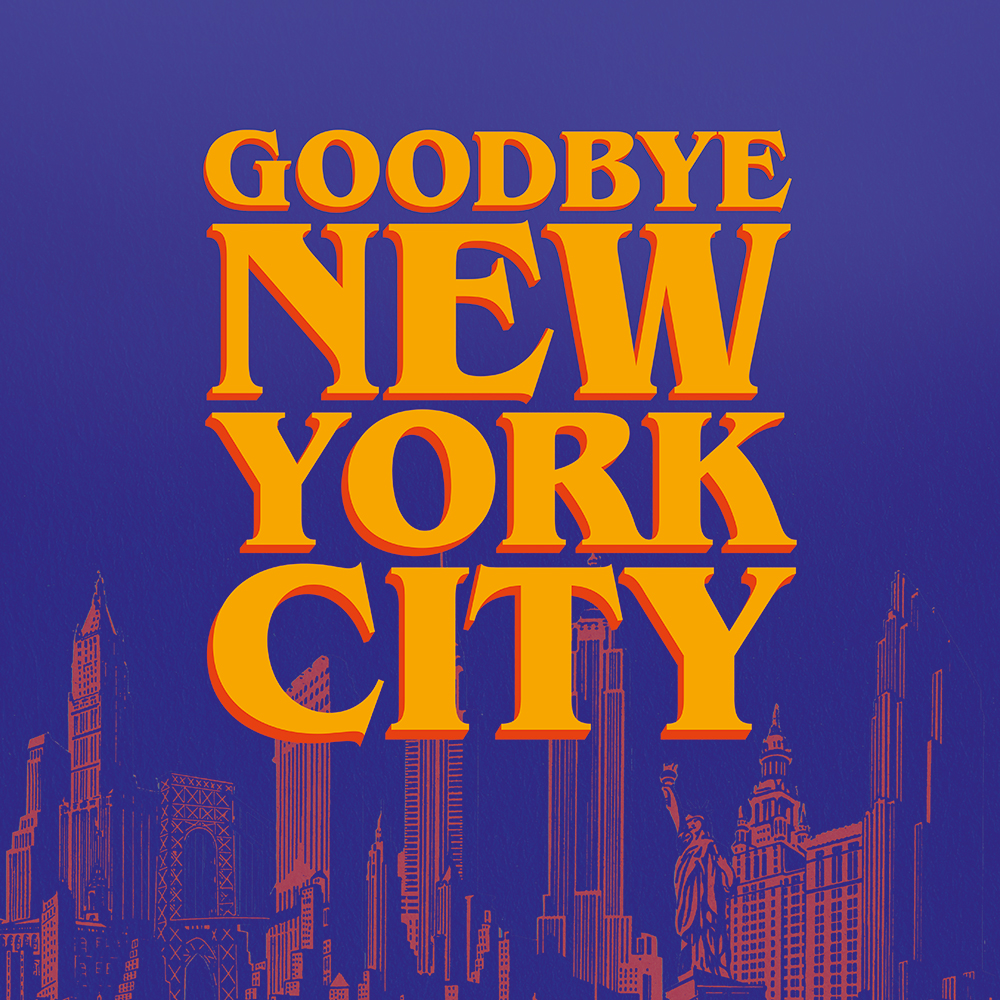






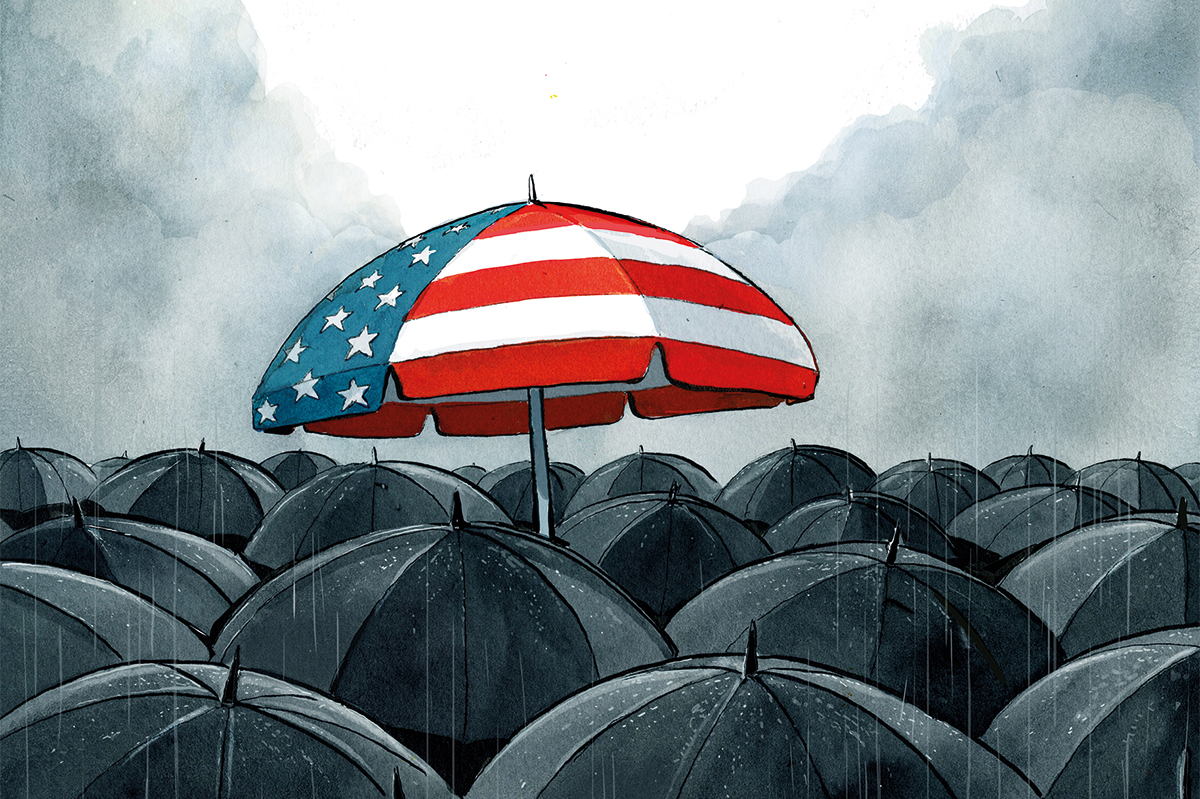
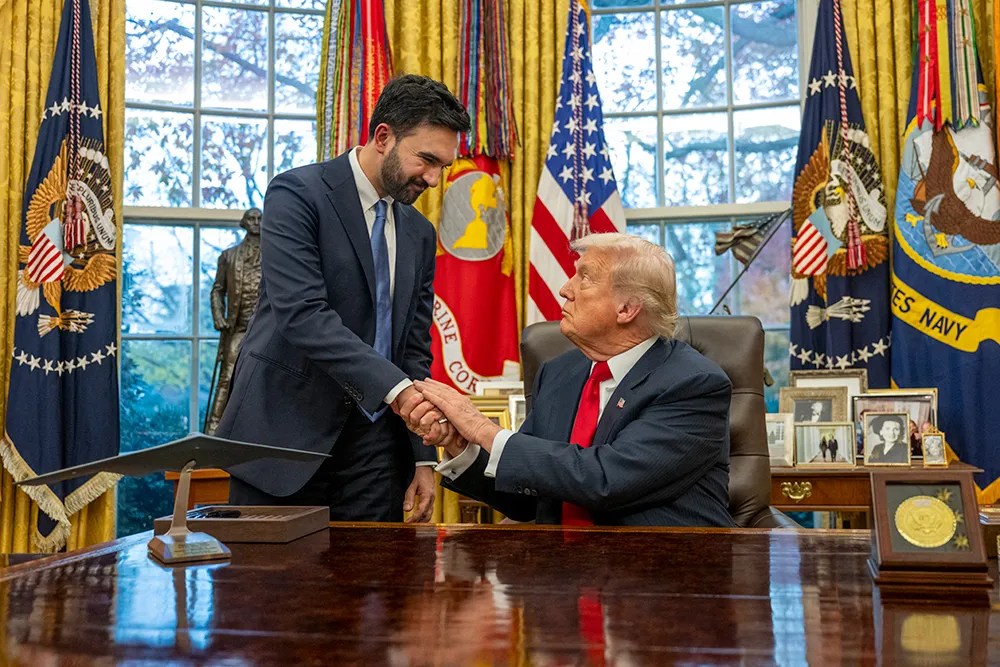
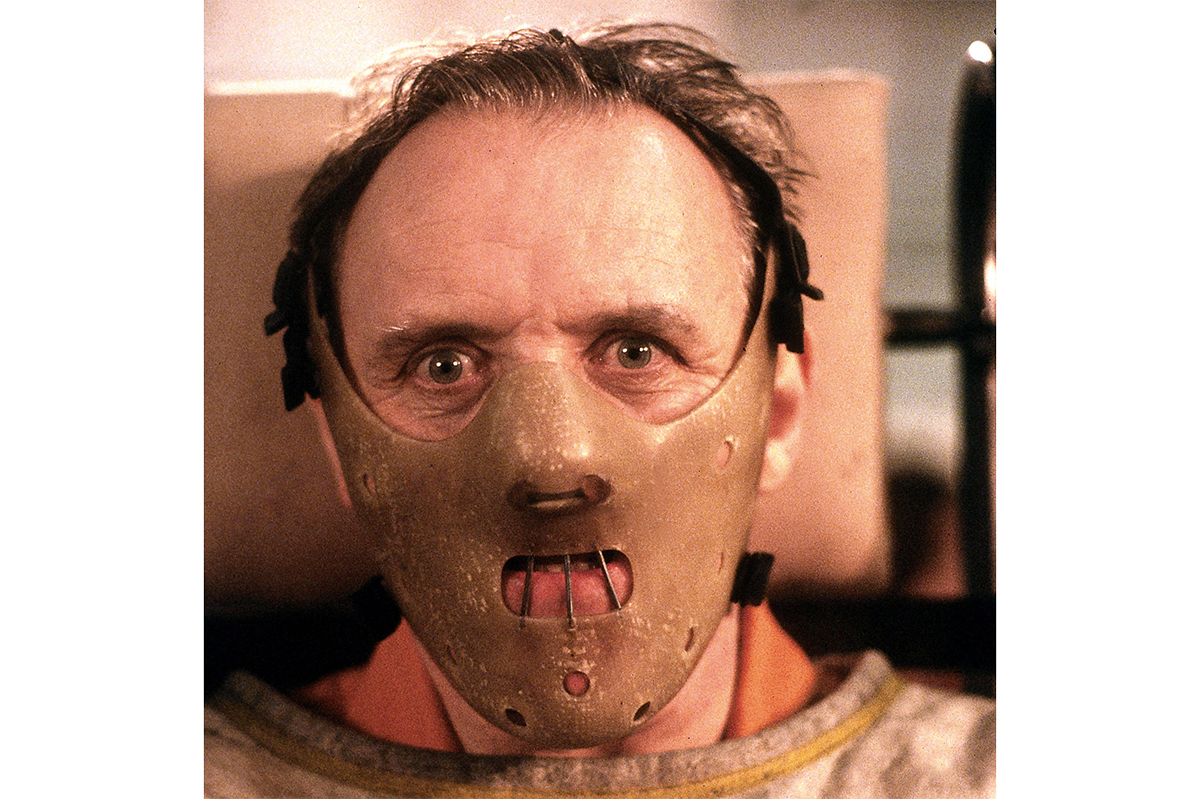

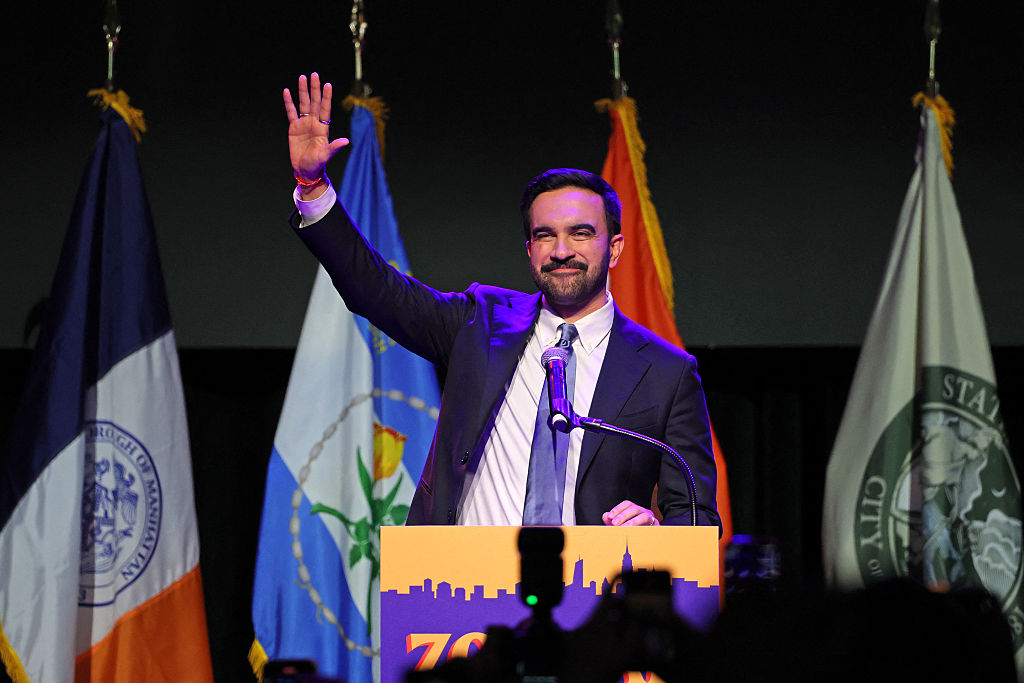
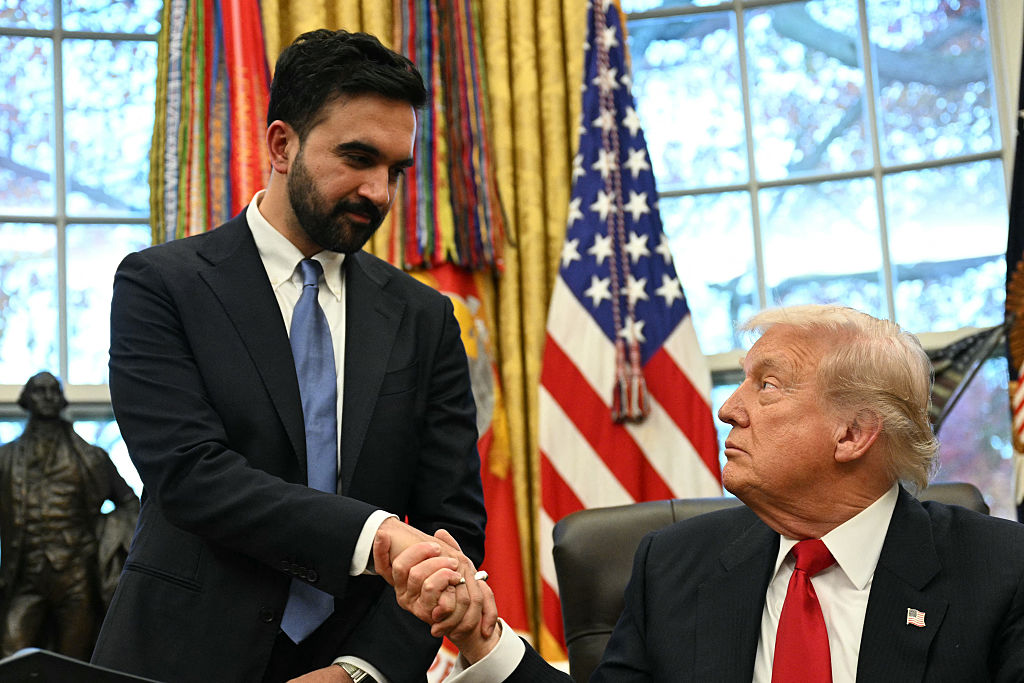







Leave a Reply